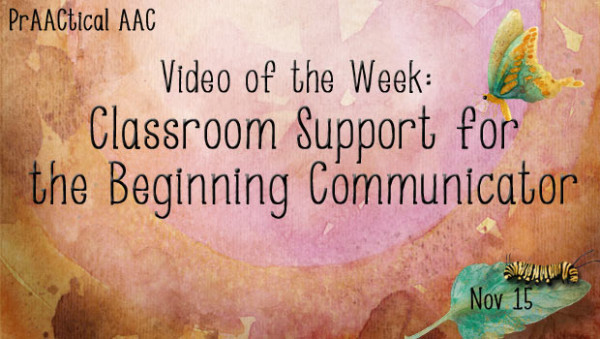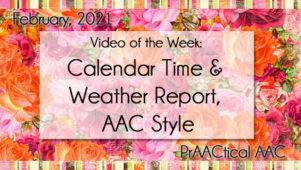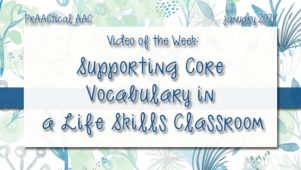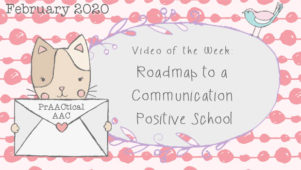Video of the Week: Classroom Support for the Beginning Communicator

Gabriella doesn’t seem to notice what her teachers and peers are doing in the classroom. When offered a choice of toys, she seems to reach for one rather randomly, has little interest in the one she chose, and knocks it to the floor after 30 seconds.
Elliot is assertive in greeting visitors to his classroom, and eagerly leads them around the room, vocalizing excitedly as he shows them around. When he needs help with a toy or material, he hands it to an adult with clear intent and expectation. He’s not using actual words just yet, and his interest in PECS has been limited.
Alyssa uses a communication board to make requests and answer questions, but only with a lot of prompting. She uses single symbol utterances in planned communication opportunities during a few activities during the school day. Team members have observed spontaneous use of her AAC tools a couple of times, but aren’t convinced that it was intentional.
If you work with learners who are at the earliest stages of communication, you know how challenging it can be to help team members get onboard with the implementation of supportive strategies. Part of the problem, at least in some cases, is that we don’t have enough time to spend with those team members to help them truly understand the characteristics of emergent communicators or what good communication support really looks like for these learners.
In this week’s video, we return to the fine work of the Dynamic Learning Maps (DLM) Professional Development team to learn more about the communication characteristics of beginning communicators and how we can support students in the classroom. This is one to bookmark and share!
You can see a previous post with DLM video on core vocabulary here.
Filed under: Video of the Week
Tagged With: beginning communicator, classroom, DLM, Unive
This post was written by Carole Zangari





